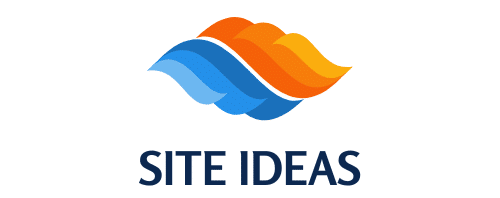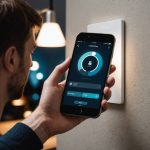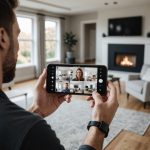The landscape of education has been transformed significantly by technology. Smartphones, in particular, have revolutionized the way students engage with learning. As mobile devices become increasingly integrated into everyday life, understanding the effective ways to use them for remote learning has become essential. This article delves into practical strategies for leveraging smartphones to enhance educational outcomes.
The Role of Smartphones in Modern Education
Smartphones have evolved into powerful educational tools. With advanced features and widespread accessibility, these devices have the potential to transform the traditional learning experience. They provide students with unprecedented access to information, enabling them to learn anytime and anywhere. Teachers, on the other hand, can use these devices to create more interactive and engaging learning environments.
A voir aussi : How to Use Your Smartphone for Secure Online Banking?
In the context of remote learning, smartphones have proven to be invaluable. They bridge the gap between students and educational content, ensuring that learning continues seamlessly outside the classroom. From accessing online courses to participating in virtual classrooms, smartphones facilitate a wide range of educational activities.
Smartphones also support various educational apps and platforms, which enhance learning experiences. These apps provide students with personalized learning paths, adaptive learning technologies, and interactive content that cater to their individual needs. As such, smartphones empower learners by giving them control over their education.
A lire en complément : How to Use Your Smartphone to Monitor and Control Smart Home Cameras?
Effective Strategies for Using Smartphones in Remote Learning
To maximize the benefits of smartphones in remote learning, it is crucial to implement effective strategies. One of the key approaches is to use educational apps that align with the curriculum. There are numerous apps available that cover a wide range of subjects and skills. These apps offer interactive lessons, quizzes, and activities that make learning more engaging and effective.
Another strategy is to incorporate mobile learning into the course content. This involves designing lessons and activities that are optimized for mobile devices. For example, teachers can create short video lessons, interactive quizzes, and digital flashcards that students can access on their smartphones. This approach ensures that learning materials are accessible and convenient for students.
Teachers can also use smartphones to facilitate communication and collaboration among students. Social media platforms, messaging apps, and online discussion forums enable students to connect and interact with their peers. This fosters a sense of community and supports collaborative learning, even in a remote setting.
Utilizing Educational Apps and Tools
Educational apps and tools play a pivotal role in enhancing the learning experience. These apps offer a variety of features that support different learning styles and needs. For instance, language learning apps like Duolingo and Babbel provide interactive lessons and exercises that help students master new languages. Math apps like Photomath and Khan Academy offer step-by-step tutorials and practice problems that aid in understanding complex concepts.
In addition to subject-specific apps, there are also general educational tools that support various aspects of learning. Note-taking apps like Evernote and OneNote allow students to organize their notes and study materials efficiently. Flashcard apps like Quizlet enable students to create custom flashcards and practice them on their smartphones.
Moreover, educational apps often include features that track student progress and provide feedback. This helps students monitor their learning and identify areas for improvement. Teachers can also use these features to assess student performance and tailor their teaching strategies accordingly.
Enhancing Communication and Collaboration
Effective communication and collaboration are essential for successful remote learning. Smartphones offer multiple avenues for students and teachers to stay connected. Messaging apps like WhatsApp and Slack enable real-time communication, allowing students to ask questions and seek help from their teachers and peers.
Video conferencing tools like Zoom and Microsoft Teams facilitate virtual classes and meetings. These platforms provide features like screen sharing, breakout rooms, and interactive whiteboards, which enhance the learning experience. Students can participate in live discussions, group projects, and presentations, just as they would in a physical classroom.
Social media platforms also play a significant role in fostering collaboration. Groups and forums on platforms like Facebook and Reddit allow students to share resources, discuss ideas, and collaborate on projects. These platforms provide a space for informal learning and peer support, which are crucial for a holistic educational experience.
Addressing Challenges in Smartphone-Based Learning
While smartphones offer numerous benefits for remote learning, they also present certain challenges. One of the primary concerns is screen time. Excessive use of smartphones can lead to eye strain, fatigue, and other health issues. It is essential to strike a balance between screen time and other activities to ensure the well-being of students.
Another challenge is digital distraction. Smartphones come with a plethora of apps and notifications that can divert students’ attention from their studies. To address this, students can use productivity apps that block distractions and help them stay focused. Teachers can also set clear guidelines and expectations for smartphone use during learning activities.
Equity and access are also significant concerns. Not all students have access to high-quality smartphones or reliable internet connections. Schools and educational institutions must work towards providing the necessary resources and support to ensure that all students can benefit from mobile learning.
In conclusion, smartphones have the potential to significantly enhance remote learning experiences. By implementing effective strategies and utilizing educational apps and tools, both students and teachers can benefit from the flexibility and accessibility that mobile devices offer. Ensuring open communication and fostering collaboration through these devices can create a more engaging and interactive learning environment.
Though challenges exist, they can be addressed with careful planning and consideration. By recognizing the transformative power of smartphones in education, we can pave the way for a more inclusive and effective remote learning experience. Embrace the potential of smartphones and unlock new opportunities for learning and growth in the digital age.
Remember, the key is to find a balance that works for you and your learners, ensuring that smartphones become a valuable asset in your educational journey.











